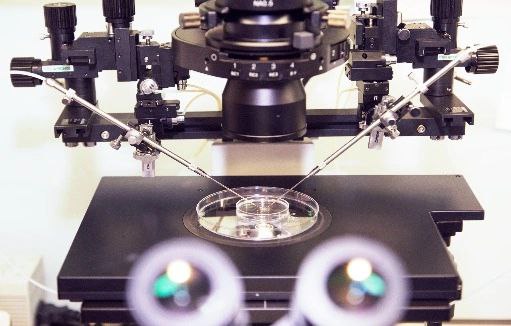
Intracytoplasmic sperm injection (ICSI)
Intracytoplasmic sperm injection into the egg, which is how ICSI stands for, is one of the most popular services at SILK Medical. By the way, the first child conceived by ICSI was born in Belgium in 1992. The new reproductive technology was a real breakthrough in overcoming male infertility factors. Gradually, indications for ICSI were widened, and today, every second fertilization can be achieved by ICSI.
The ICSI manipulator microscope looks impressive. The miracle of fertilization is performed thanks to two microinstruments. One with a suction cup for the egg, the other with a needle for the sperm. ICSI is a very delicate manipulation that requires precise and accurate movements from the embryologist.
How ICSI is done
Under the 400x magnification of the microscope, the embryologist will select a morphologically correct sperm and, after first rubbing its tail, will introduce it into the egg. The success rate of such fertilization can be from 65% to 90%. The plus side is that only one sperm is needed for one egg, which solves the problem of low sperm concentration and motility.
Indications for ICSI:
- Male infertility factor;
- Use of spermatozoa obtained by surgery;
- Low percentage of IVF fertilization;
- Using an oocyte after cryopreservation;
- Planned PGT by PCR;
- PICSI.
PICSI is an additional way to select sperm for fertilization by ICSI.
Fertilization in natural conditions most often occurs with a mature and morphologically correct sperm. The embryologist can assess the morphology – the appearance of the sperm – thanks to the high magnification of the microscope. But how does one determine maturity? This is where nature itself prompts. The egg shell is thought to contain hyaluronic acid, to which only mature sperm without DNA breakage are most likely to respond. Embryologists use bowls coated with biopolymer hyaluronate. Mature and maximally genetically healthy sperm actively rush to this substance and seem to “stick” to it. The embryologist will then select one of these cells for the ICSI fertilization.

